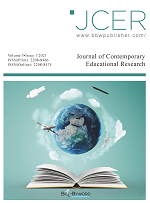Abstract
This article expounds on Ezra Pound’s translation anthology, Cathay by elaborating how he recreated classic Chinese poetry in modern English with his own translation aesthetics and theory. As both translation practice and recreation, Cathay exerts profound impact on global literatures and translations, conveying enlightenment to cultural exchanges between different civilizations. Based on Pound’s translation theory, this article intends to unfold the aesthetics in Cathay including the beauty of exotic oriental culture, emotions that travels across time and space, and concise imagery through his recreation of connotations, themes, and text forms. Distinguishing from the precedents, Pound has made breakthroughs in the translation process, form, and criteria, valuing the translator’s subjectivity. Nowadays, as overseas Chinese learners are increasingly keen in the Chinese culture, Pound’s re-conceptualization of translation and cultural understanding can serve as rich references to cross-cultural exchanges and mutual learnings.
References
Hayot E, 1999, Critical Dreams: Orientalism, Modernism, and the Meaning of Pound’s China. Twentieth Century Literature, 45(4): 511.
Bellew, PB, 2017, At the Mercy of Editorial Selection: Amy Lowell, Ezra Pound, and the Imagist Anthologies. Journal of Modern Literature, 40(2): 22-40.
Di F, 2014, A Study on Ezra Pound’s Cathay from the Perspective of Deconstructionist Translation Theory.
Venuti L, 2009, The Translator’s Invisibility: A History of Translation (second edition), English Studies.
Jiang H, 2001, Ezra Pound’s Theory of Translation. Journal of Foreign Languages, (04): 78-81.
Jiang H, 2001, New Directions of English Poetry – Research on the Poetic Theories and Cultural Criticism of Ezra Pound and Eliot. Hunan Education Publishing House.
Wang G, 2005, On Ezra Pound’s Conception of Translation and His Creative Rendering of Classical Chinese Poem. Chinese Translators Journal, :20-26.
Wu Q, 2006, Ezra Pound and Chinese Culture, Shanghai Foreign Language Education Press.
Barnes D, 2011, Geographies of Politics, Geographies of Literature: Ezra Pound and Italian Modernism. Comparative American Studies an International Journal, 9(2): 161-73.
Jennings C, 2016, Pirating Pound: Drafts & Fragments in 1960s Mimeograph Culture. Journal of Modern Literature.
Kindellan MR, 2016, ‘I Have Always Loathed Reading’: On Ezra Pound’s Late Cantos, Paideuma, 43.
Baker W, 1997, The Cambridge Companion to Ezra Pound, Reference Reviews.
Nord C, 2001, Translating as a Purposeful Activity, Functionalist Approaches Explained, Shanghai Foreign Language Education Press.
Yu-Ting AN, 2016, A Study of Ezra Pound’s Cathay from the Perspective of Rewriting Theory. 000(008): 134-6.
Yip W, 2015, Ezra Pound’s “Cathay”, Princeton University Press.
